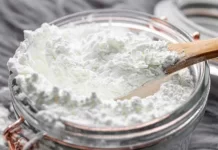If you’ve been drinking traditional sources of milk your whole life, you’re probably wondering why you see more and more lactose-free milk products hit the shelves. What is lactose-free milk? Why is it important in modern society? Let’s take a look!
What’s Lactose-Free Milk?
Unfortunately, though it might not have affected you, some people have lactose intolerance. In other words, a type of sugar naturally occurring in milk and other dairy products. When the body is intolerant of this sugar, it can’t break it down, and this causes vomiting, diarrhoea, abdominal pain, and other digestive problems.
Therefore, manufacturers in recent years have developed an alternative product for those who want to consume milk but without all the side effects that come with natural milk. While cow’s milk contains the most lactose, it’s also found in sheep’s milk and goat’s milk. As a result, lactose-free milk is a saviour for those with lactose intolerance. They can finally enjoy tea, cereal, and even a simple glass of milk again.
How is Lactose-Free Milk Made?
Ask ten people about lactose-free Australian milk, and they’ll tell you that manufacturers remove the lactose. In reality, this isn’t the case. Instead, manufacturers actually add something to the product – lactase. Rather than eliminating lactose, adding lactase provides the digestive system with some assistance in breaking down the lactose.
Although you will find products with the lactose removed, these are generally more expensive because the manufacturing method is more technical and advanced. For example, the industry is now learning how to separate lactose from milk mechanically. Elsewhere, some manufacturers pass the milk over lactase, and this helps to remove the lactose.
All in all, adding lactase is the most common method because the ingredient helps the body to break down the lactose, and people with intolerances can enjoy milk once again.
Why is lactose-free milk made? According to one source, Caucasians are less likely to develop lactose intolerance in their lives. In total, around 5% of Caucasians will develop an intolerance to lactose, while up to 75% of other ethnicities could develop the problem. What’s more, in the four years leading up to 2015, the number of people claiming to be lactose intolerant increased by 1.2% to 4%. Since then, the number has grown even further.
Consequently, the reason that lactose-free milk is made is that it provides those with an intolerance a chance to enjoy milk and milk products.
Pros of Lactose-Free Milk
Of course, one of the most significant benefits is that it removes the symptoms of intolerance after consuming milk products. This includes excess gas, a bloated sensation, diarrhoea, vomiting, and even nausea. In addition, since manufacturing methods adding lactase don’t take anything away from the milk, the products have the same nutritional profile as before. This means minerals, vitamins, protein, calcium, and all the other goodness in cow’s milk.
As long as you’re consuming lactose-free milk as part of a healthy diet, you’ll reduce the risk of heart disease and other ailments.
Cons of Lactose-Free Milk
Despite all the negative press that lactose receives, it plays an essential role in milk – it provides the sweetness as the sugar. Therefore, some manufacturers need to add sweeteners to keep the same taste. When shopping for lactose-free milk, always read the label and understand what you’re putting into your body.
Also, it’s important to note that lactose-free and dairy-free aren’t the same, and the terms are not interchangeable. If you have a dairy allergy, you shouldn’t consume lactose-free milk.

































